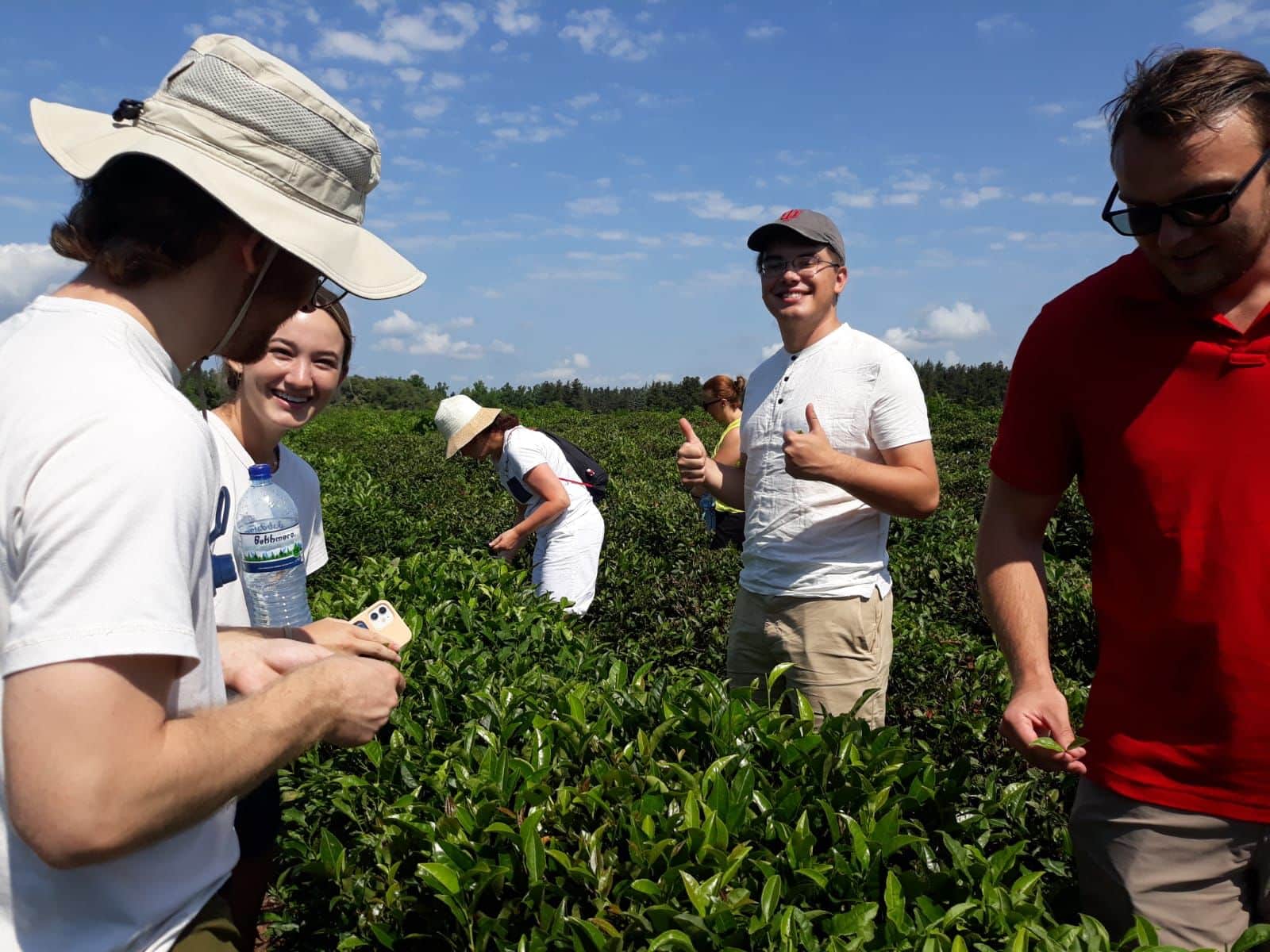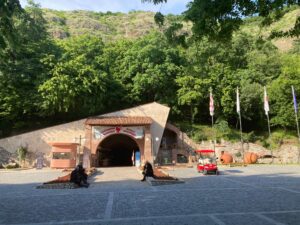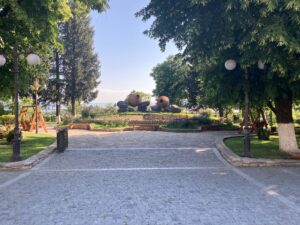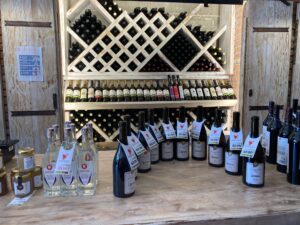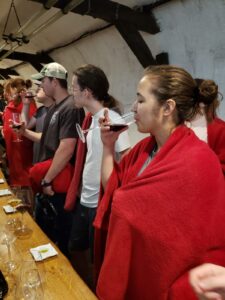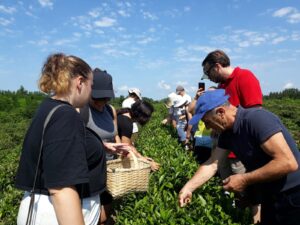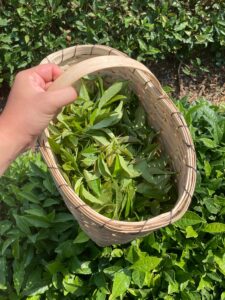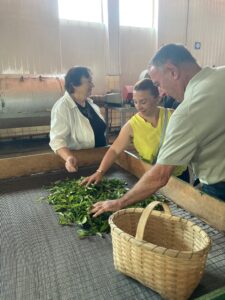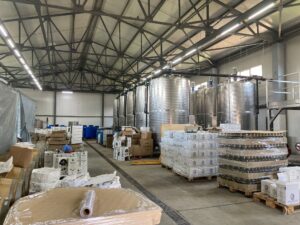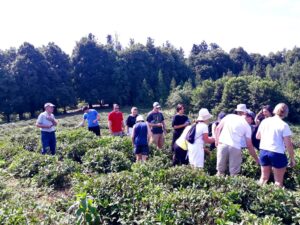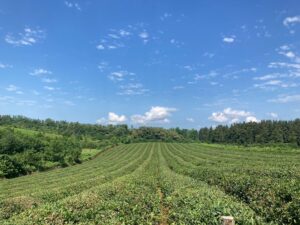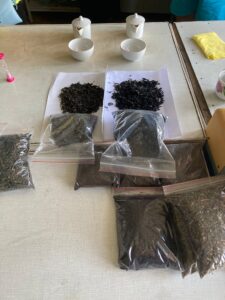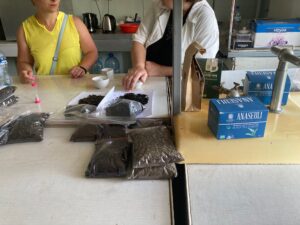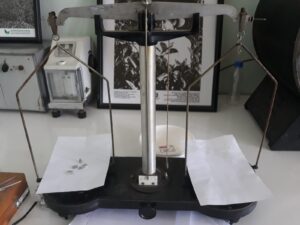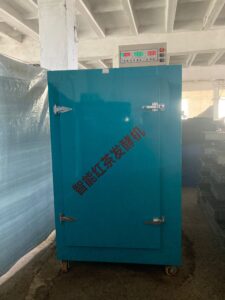Less than a three hour drive from Tbilisi is the northeastern Georgian province of Kakheti. Georgia is famous for its wines and Kvareli, a town in Kakheti, contains a winery belonging to one of the country’s most well-known wine producers, Khareba.
Georgia was also well known in the USSR as the source of nearly 95% of the country’s tea production. In fact, in the Soviet era, Georgia was the fourth largest grower and supplier of tea in the world. One of Georgia’s tea plantations, Anaseuli Tea Plantation, is located just an hour and a half northeast of Batumi.
While studying abroad with SRAS in Georgia during the summer of 2022, our group had the chance to visit this winery and this tea plantation during two separate excursions. When we first arrived in Georgia, we stayed in Tbilisi for a couple days before transferring to Batumi, during which time we visited Kakheti. A month later, we traveled up from Batumi to the tea plantation as we headed for a weekend trip in Kutaisi.
Viticulture and Wine Making in Georgia
Khareba Winery is an award-winning wine company that owns several wineries and a total of 1500+ hectares of vineyards. They grow as many as 30 different Georgian and European grape varieties. Among their rarer Georgia-specific varieties are Krakhuna, Tsolikouri, Tsitska, Aladasturi, Otskhanuri Sapere. However, they also grow Riesling, Sauvignon and Cabernet Sauvignon, Chardonnay, Aligote, Muscat, Pinot, Merlot, and Cabernet Franc.
According to the Winery’s webpage, the company produces over 50 products including 10 premium wines, 7 wines specific to their place of origin, 10 qvevri wines (made using giant clay pots, a Georgian technique dating back thousands of years), 5 basic wines, in addition to sparkling wine, wine brandy, chacha (a local hard liquor made from grapes), and grape seed oils.
The particular winery in Kvareli that we visited rests at the foothills of the Caucasus mountains with a view of the Alazani River Valley stretching out before it. The Alazani Valley is famous for its long and rich history in winemaking. The wine in the Kvareli Winery Khareba is stored within the mountain side in a series of tunnels.
The winery is focused on preserving the ancient traditions of wine making in Georgia, which is where the world’s oldest known evidence of winemaking has been found, dating back 8000 years. The winery also has some of the most modern technology, however, because it aims to produce natural wine of the highest quality. They use both Georgian and European winemaking processes, and we were able to taste wines using both methods.
The traditional Georgian winemaking process uses qvevri, clay vessels that are oval-shaped and typically buried. In the first stage of the winemaking process, the qvevri are cleaned and often coated in beeswax to allow for fuller maceration (allowing all components to break down and steep) and to improve fermentation. Grapes are crushed and put into qvevri together with the grape skins, stems, and pips (called the chacha). During stage two, alcoholic fermentation converts the starch in the mixture into alcohol, and malolactic fermentation converts the malic acid into lactic acid and carbon dioxide, which reduces acidity and produces flavor. The final stage is to age the wine. Following fermentation, the qvevri are sealed, and the wine is left undisturbed until the time for decantment or continued aging. The chacha naturally collects at the bottom of the qvevri and will be later gathered and distilled into the Georgian hard alcohol drink known as “chacha.” The wines produced are often more amber in color and have a mineral taste from the clay qvevri in which they are aged. As a result, wines produced with the Georgian method are more tannic, meaning they taste more bitter and “dry.” In contrast, wine that has been aged in oak barrels has a dark color, smoother mouthfeel, and fuller taste.
Tea Production in Georgia
Despite once having an enormous tea empire, Georgia’s tea making industry collapsed with the end of the Soviet Union as heated politics, civil war, and a broken market tore it apart. Nevertheless, tea is still an important part of Georgian culture, and several small groups of tea makers are looking to bring it back to life. Georgia’s government also has several policies in place to encourage the return of the plantations. The industry is still a small fraction of what it was, however.
Today, most Georgian tea plantations are in the Guria and Adjara regions where the subtropical, humid climate is ideal for the growth of tea plants and where chilly winters naturally kill off insects and pests without causing the plants harm. These long winters mean the plants take longer to fully develop, lending the finished product a taste slightly different from others.
We visited the Anaseuli Tea Plantation and Factory when we were en route from Batumi to Kutaisi in July. On the plantation, tea bushes stretched out in rows before us. We formed lines on either side of the rows and plucked the young top two leaves and bud of the tea plants. This is the part used in tea making rather than the fully grown, mature leaves.
Following the tea leaf harvest, we took our basket of leaves to the tea factory. There, the leaves are first spread out to dry. Workers sort through them and take out any bad leaves or unwanted tidbits that made it into the gathering basket. These same leaves are then used to make both green and black teas; it is the way in which they are processed that produces the different results.
For black tea, the leaves are rolled and pressed first. This longer exposure to air gives the leaves time to oxidize. As a result, the green leaves turn almost black in color and intensify in flavor. After having been rolled, the leaves are placed on trays and into a fermenting room or chamber that has a warm temperature and very high humidity. At the factory we were at, the temperature was 26 C/79 F and the humidity was 95%. This temperature also allows for a quicker fermentation time (couple hours) while not being so hot as to destroy the quality of the leaves.
Production for green tea takes the reverse process with a shorter fermentation process. The leaves are first heated in the fermenting room. Preheating the leaves removes their bitter taste and, more importantly, minimizes oxidation-fermentation and keeps the leaves’ lighter color. The leaves are pressed after this step. The shorter processing time of green tea also explains why it has a lower caffeine content compared to black tea. Oxidation is what allows caffeine to be extracted from the tea leaves more easily when they are steeped.
We had tea freshly brewed while at the factory, and got to compare the flavor profiles of each one. The black tea had a smell and taste similar to hay or wheat, while the green was more fishy.
Conclusion
Wine and tea are probably Georgia’s most consumed drinks, so it was an incredible opportunity to see where and how they are made by local producers. Khareba’s winery is not only stunning, it has won golds at some of the most prestigious competitions, including the Decanter Wine Awards. Many of Georgia’s tea plantations were abandoned and overgrown with wild plants and trees following the Soviet Union, but local tea makers and tea making communities are looking to preserve the fields and put Georgia’s tea back on the map. I can only wish them all well as they look to preserve and expand on delicious Georgian traditions!
You Might Also Like
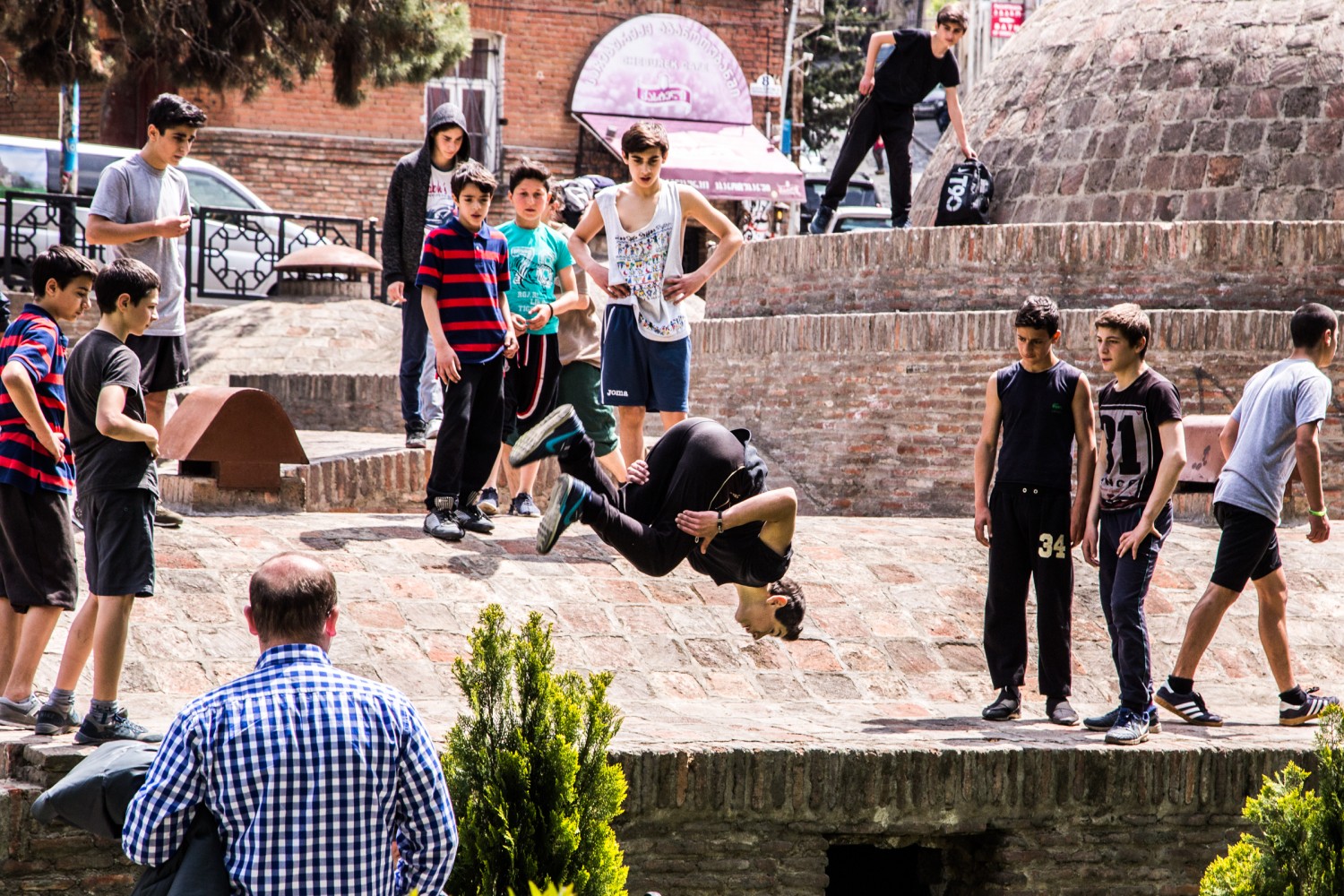
SRAS Guide to Living in Tbilisi
What’s it really like to live in Tbilisi for a semester? Staying long-term in a city is much different from just vacationing there. You’ll need to navigate more of the practical, everyday services of the city. You will also need to budget for more miscellaneous and long-term expenses. Thus, this guide covers everything from haircuts […]
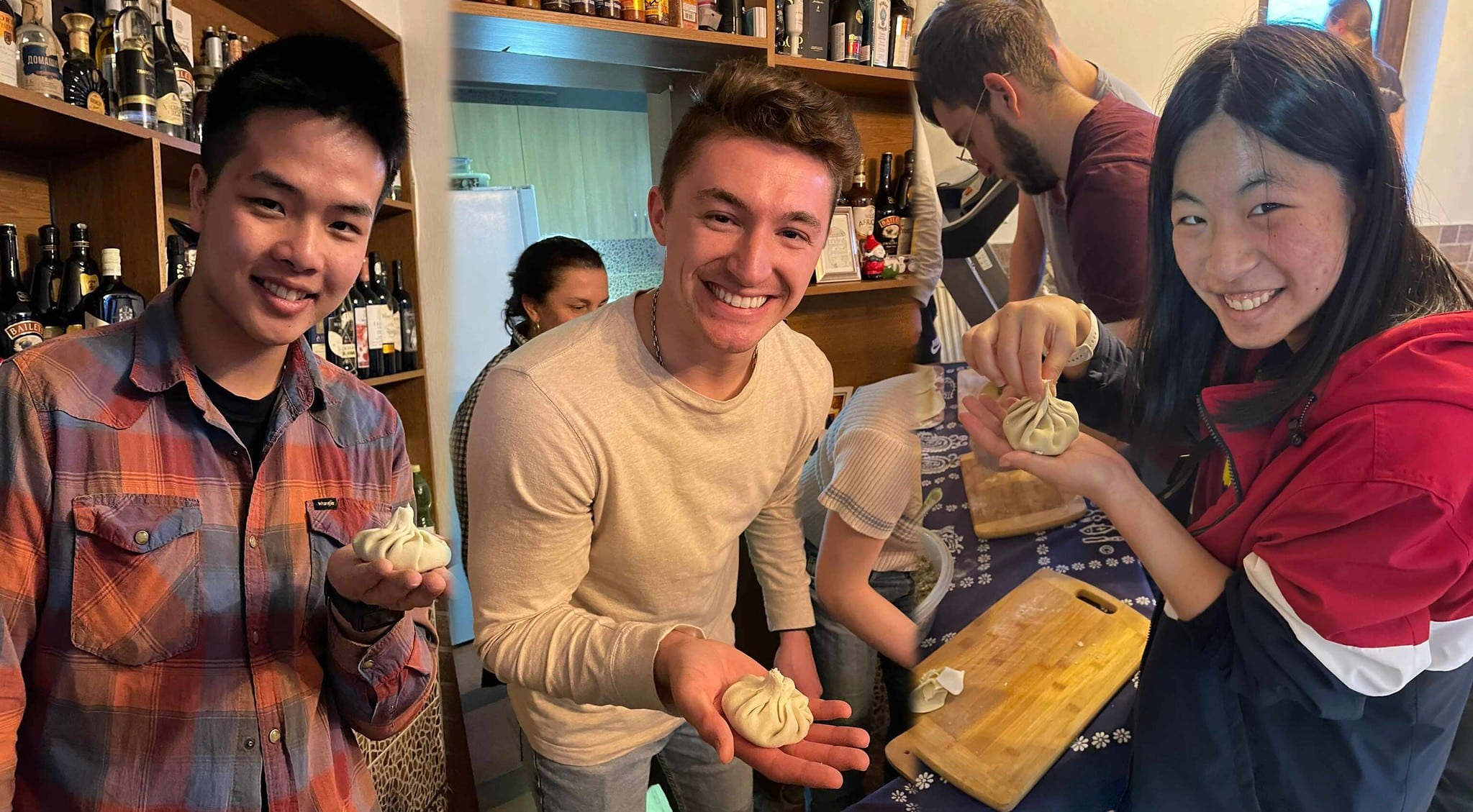
Spring Break: Georgia Program Review
Over about one week in early March, SRAS students experience Georgian history, culture, and food. The Spring Break: Georgia program offers a unique opportunity to explore Georgia while meaningfully engaging with locals and building intercultural skills. Read below the experiences of real students who have attended this short but transformative study abroad program! Ian […]
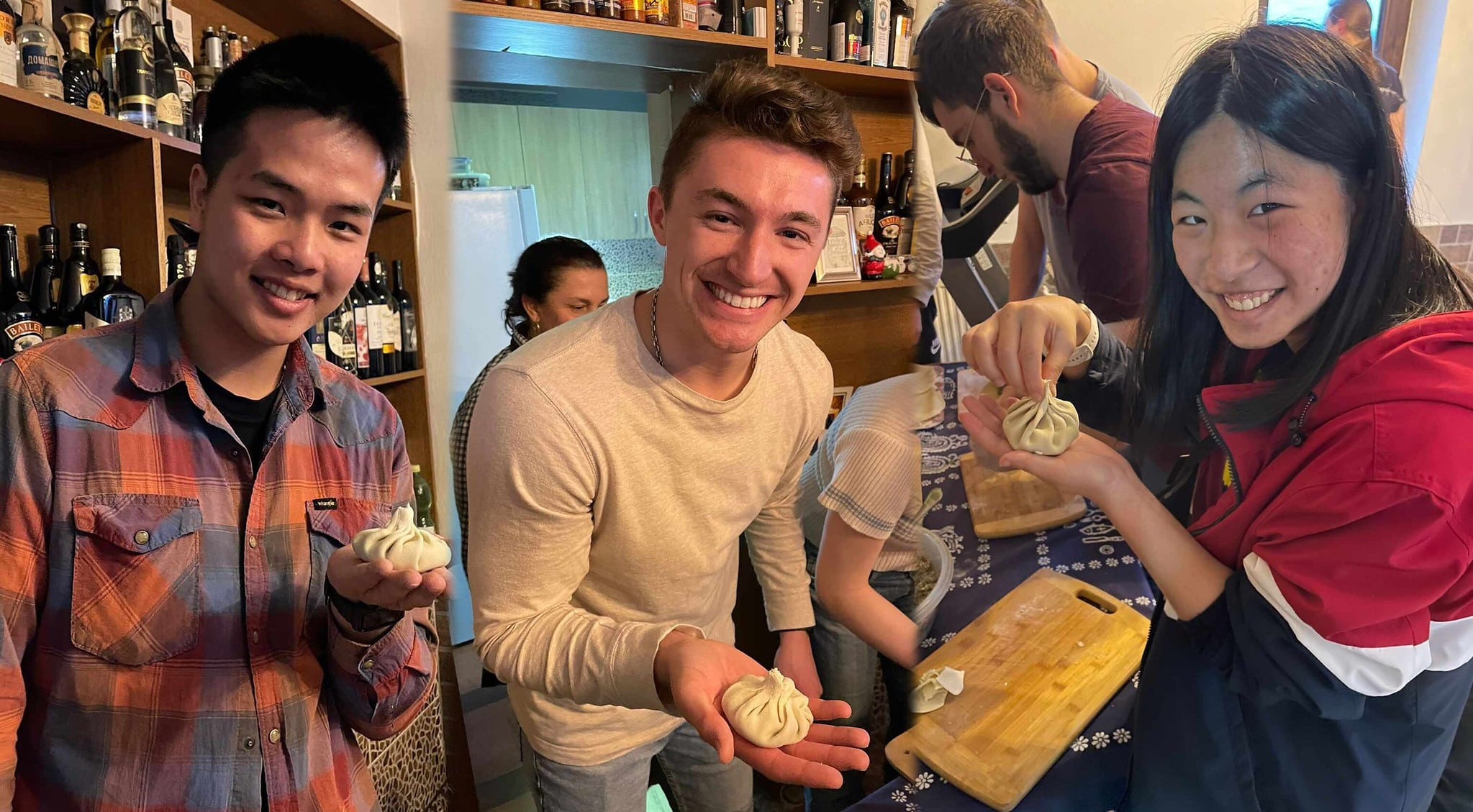
Preparing for and Coping with Culture Shock
Some of our students report not feeling culture shock at all. Some are surprised by how much culture shock they experience. Often, those most affected are those who did not expect it. So how can you prepare to live in a new culture and get the most out of the experience? How do you prepare […]

International Airfare For Study Abroad
SRAS is not in the business of selling plane tickets, with the exception of group educational tours and domestic flights not available for purchase outside of our program host countries. We do, however, continuously monitor flight pricing and travel logistics routings for our study destinations and we travel a lot ourselves. As such, we are […]

Ballroom and Latin Dancing in Georgia
In my six years as a competitive ballroom dancer in the United States, I’ve been struck by the fact that most of my coaches, teachers, and judges are from former Soviet states. Even Ukrainian President Zelensky had a star turn as a dancer when he won a Dancing with the Stars competition in 2006. During […]

